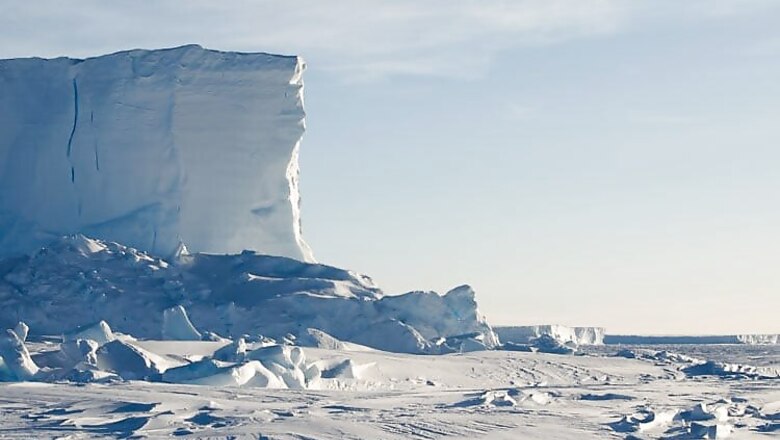
views
London: If you are in awe of the Grand Canyon in the US, brace yourself for this: The world's largest canyon - over 1,000 km long and in places as much as one km deep, - may lie under the Antarctic ice sheet, a team of scientists including Indian researchers has revealed.
The canyon system is made up of a chain of winding and linear features buried under several kilometres of ice in one of the last unexplored regions of the Earth's land surface - Princess Elizabeth Land (PEL) in East Antarctica.
“Our analysis provides the first evidence that a huge canyon and a possible lake are present beneath the ice in Princess Elizabeth Land. It's astonishing to think that such large features could have avoided detection for so long,” said lead researcher Dr Stewart Jamieson from Durham University in Britain in a paper published in the journal Geology.
Very few measurements of the ice thickness have been carried out in this particular area of the Antarctic, which has led to scientists dubbing it one of Antarctica's two “Poles of Ignorance.”
The researchers believe that the landscape beneath the ice sheet has probably been carved out by water and is either so ancient that it was there before the ice sheet grew or it was created by water flowing and eroding beneath the ice.
“This is a region of the Earth that is bigger than the UK and yet we still know little about what lies beneath the ice,” Jamieson added.
In fact, the bed of Antarctica is less well known than the surface of Mars.
“If we can gain better knowledge of the buried landscape, we will be better equipped to understand how the ice sheet responds to changes in climate,” he noted.
Faint traces of the canyons were observed using satellite imagery.
The canyons may be connected to a previously undiscovered sub-glacial lake as the ice surface above the lake shares characteristics with those of large sub-glacial lakes previously identified.
The data suggests the area of the lake could cover up to 1250 km - more than 80 times as big as Lake Windermere in the English Lake District.
“Discovering a gigantic new chasm that dwarfs the Grand Canyon is a tantalising prospect,” said study co-author Professor Martin Siegert from the Grantham Institute at Imperial College London, UK.
“Our international collaboration of US, UK, Indian, Australian and Chinese scientists are pushing back the frontiers of discovery on Antarctica like nowhere else on earth,” he added.
An airborne survey taking targeted radio-echo sounding measurements over the whole buried landscape is now underway with the aim of unambiguously confirming the existence and size of the canyon and lake system, with results due later in 2016.




















Comments
0 comment